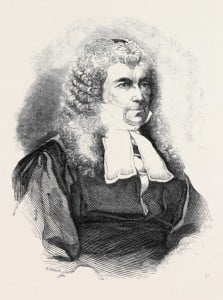In London, prisoners were put in a detentional prison after they had been committed by a magistrate. Some of these were: Middlesex House of Detention at Clerkenwell, Newgate and Horsemonger Lane Jail
Once you had been convicted you were sent to a different prison depending upon the length of your sentence. If you had a short term of punishment, you went to City House of Correction, Middlesex Houses of Correction or Surrey House of Correction.
But if you were convicted to some form of penal servitude or transportation you could be sent to Pentonville or Millbank prisons, Female Convict Prison at Brixton or the Hulks at Woolwich.[1]
The Brixton or Surrey House of Correction is probably where Isabella was sent after conviction. According to Henry Mayhew, writing in 1862,
“… that, despite its standing in the healthiest situation, the old Surrey House of Correction was one of the unhealthiest of all the London prisons”.[2]
Like many prisons it was overcrowded, often 3 to a cell which was not well ventilated, thus causing lots of sickness and fever. It was at the Brixton where the treadmill was first setup as a form of punishment.[3]
The exercise yard though was not gravel; instead prisoners were surrounded by grass and flower beds.[4]

Brixton Wash house – unknown source
Let us now compare this to Isabella’s incarceration at the Launceston House of Correction.
The factory opened in 1834 and was built as an octagonal plan. Between 80 and 100 women were able to live and work there comfortably but by 1842 when Isabella was there, over 250 women and their children were living in crowded conditions.[5]
With such crowding, behaviour of the women could change as happened on 22nd October 1842, a few months after Isabella had left.[6]

Extract from Launceston Examiner , 22 October 1842, p. 4
In a report written by La Trobe at the end of 1846 he mentions the female factory has two mess rooms and three wards each able to accommodate 30 women. Separate apartments were being built but they could not be made into solitary ones. There was also a hospital which had room for 7 women. There were three sheds used for washing and spinning which I assume would be used as punishment for those women sent in by local magistrates.[7]
At the time of his visit to the Launceston Female Factory the personnel running it were a medical officer, a schoolmistress, a superintendent, two matrons, one clerk and one gatekeeper. They were looking after 75 needlewomen, 17 women nursing children, 10 servants, 4 sick, 8 washing and 9 using wool.[8]
Maybe after spending time in the various female houses of correction both in London and Launceston, Isabella decided that marriage and a chance to have her own family would be a better way of leading her life.
References
[1] Mayhew, Henry, and John Binny. The Criminal Prisons of London, and Scenes of Prison Life. London, England: Griffen, Bohn and Company, 1862, p 82 viewed 12 June 2016. https://archive.org/details/cu31924024894481.
[2] ibid, p 174 viewed 12 June 2016
[3] ibid, p 174 viewed 12 June 2016
[4] ibid, p 185 viewed 12 June 2016
[5] http://www.femaleconvicts.org.au/index.php/convict-institutions/female-factories/launceston-ff
[6] Launceston Examiner (Tas. : 1842 – 1899), 22 October 1842, p. 4. (EVENING), viewed 12 Jun 2016, http://nla.gov.au/nla.news-page4058541
[7] Brand, Ian, Charles Joseph Latrobe, Michael Sprod, and James Boyd. The Convict Probation System, Van Diemen’s Land 1839-1854: A Study of the Probation System of Convict Discipline, Together with C.J. La Trobe’s 1847 Report on Its Operation and the 1845 Report of James Boyd on the Probation Station at Darlington, Maria Island. Hobart: Blubber Head Press, 1990. p 200
[8] ibid, p 134
Readers: Did you have any female convicts stay in a house of correction either in London or Australia? Why were they there?

